Song Be City Airstrip
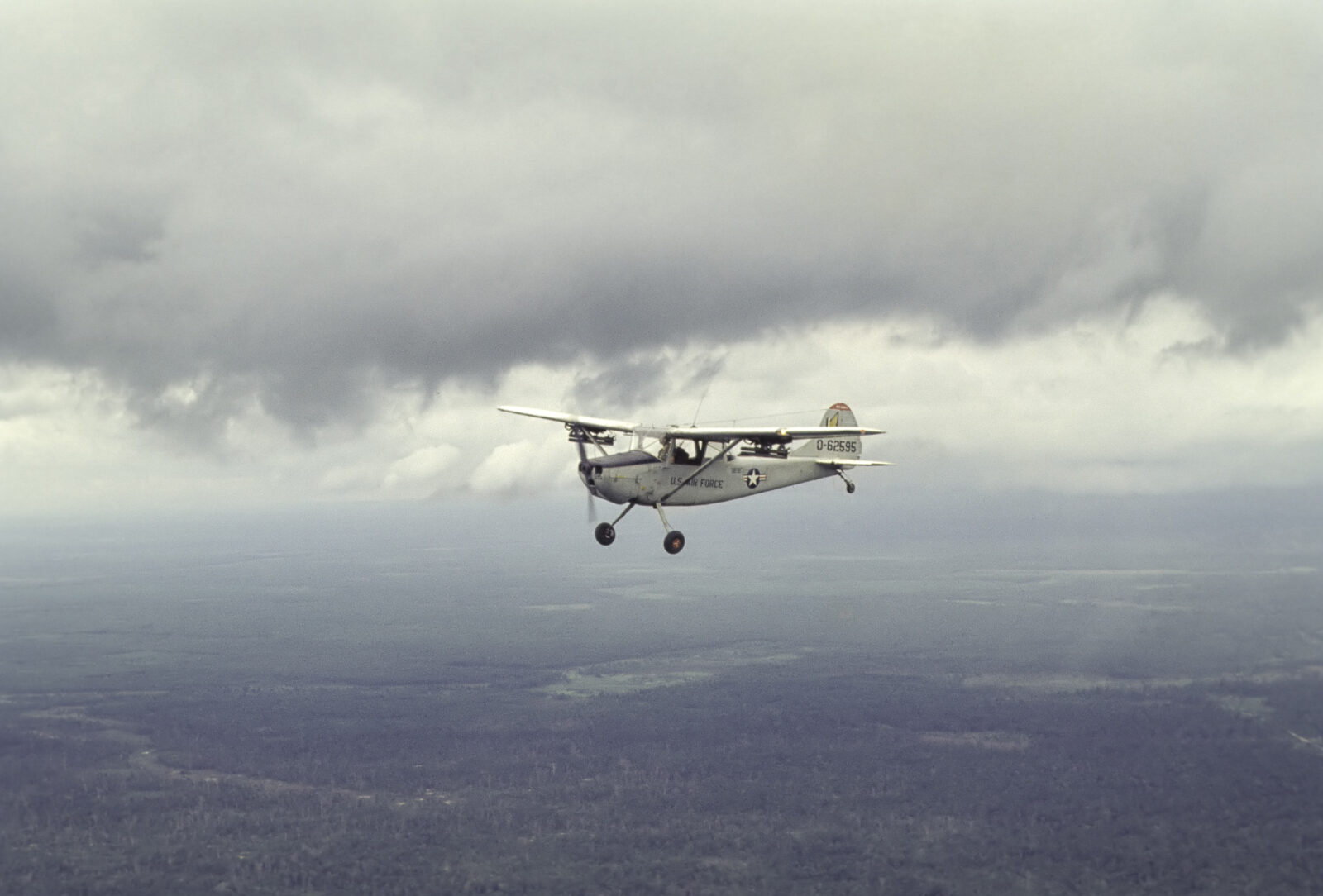
Red Marker One Eight: “Ramrod Eight Seven Lead, confirm friendly smoke and target in sight.”
Ramrod Lead: “Red Marker, roger. Friendly smoke is green. I have your mark in sight. Rolling in.”
Red Marker: “Lead you are cleared in hot. Hit my smoke.”
Ramrod Lead: “Lead is in hot.”
Ramrod Lead (after dropping bombs): “Lead is off.”
Red Marker: “Ramrod Two, confirm friendlies and hit twenty meters short of Lead’s bombs.”
Ramrod Two: “Roger, Red Marker. Green smoke and twenty meters short. Rolling in.”
Red Marker: “Two, cleared in hot.”
Ramrod Two: “Two is in hot.”
Ramrod Two: “Two is off.”
Red Marker: “Lead, I need a strafing run in that tree line just beyond your first bombs. Do you need another mark?”
Ramrod Lead: “Negative on the new mark. I’ve got the tree line in sight, Marker. Rolling in with Twenty Mike Mike.”
Red Marker: “Cleared hot.”
Ramrod Lead: “In hot.”
Ramrod Lead: “Lead is off.”
Red Marker: “Two, make the same run and then hold high and dry while I take a look.”
Ramrod Two: “Roger. Rolling in.”
After a bomb and strafing attack by the aircraft, the Red Marker Forward Air Controller (FAC) would go in to make a damage assessment. If the result was good, he would let the “fast movers” leave and have the Vietnamese Airborne troops on the ground go in and do a sweep of the target to provide more detailed information.
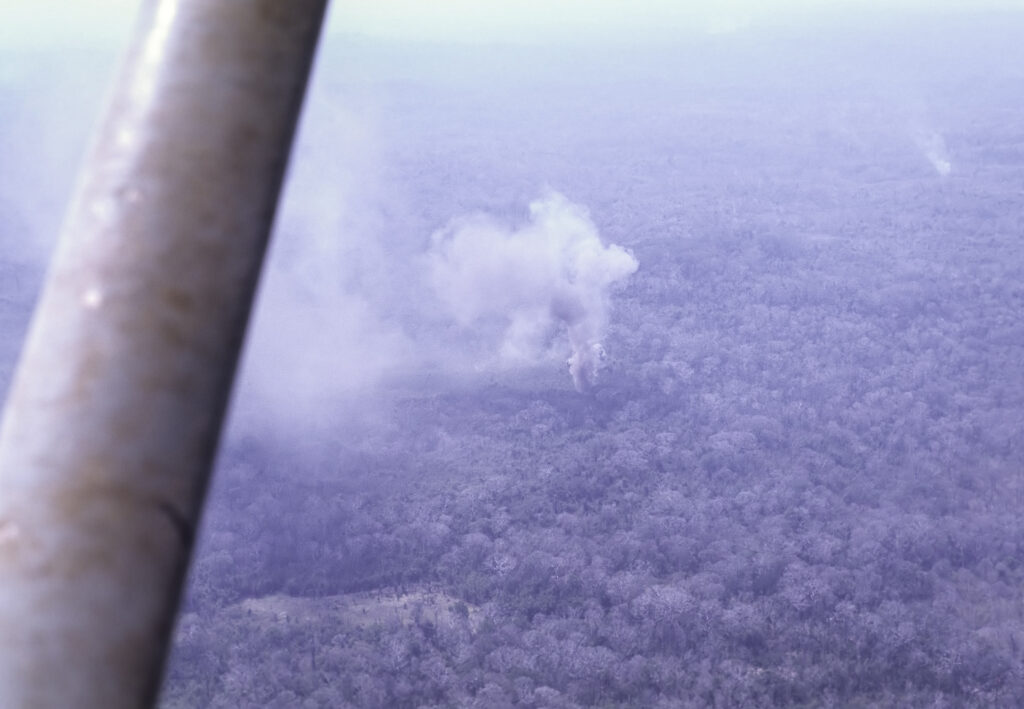
A day in the life of a FAC involved hours of slowly patrolling his assigned area. Staying in touch via radio with the ground troops he supported. Idling and waiting for instructions. Then suddenly a radio call would come and within seconds, he would find himself in the middle of an intense fight for life and death as he maneuvered his light, unprotected Cessna O-1 Bird Dog into the fight to mark targets and guide fighter bombers to the enemy.
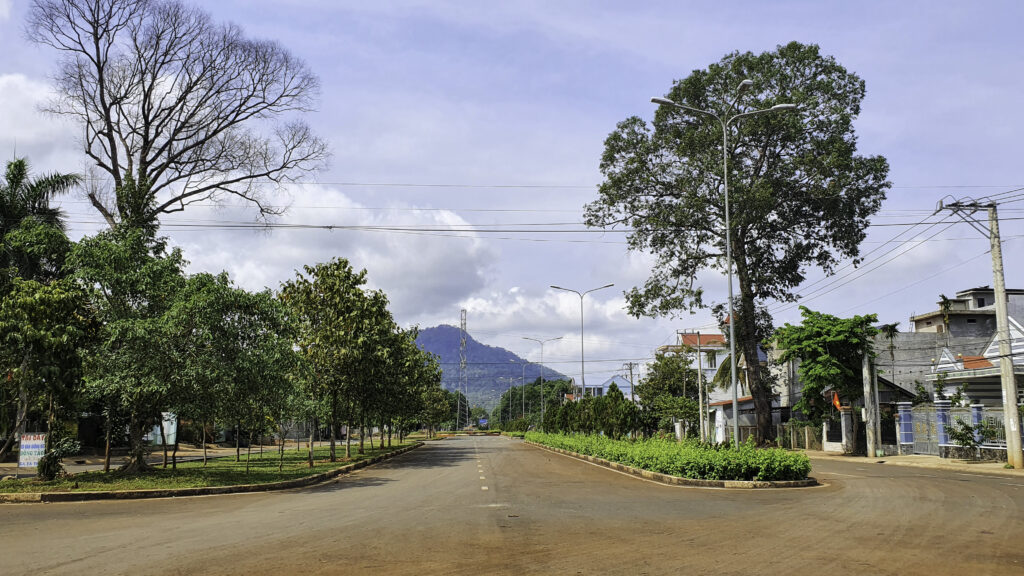
Some of these men worked out of Song Be City Airstrip.
This little main street of a small remote town in Phước Long Province was once one of the most challenging airstrips in all of the Republic of Vietnam for the Red Marker FAC pilots flying their dangerous missions over the jungle covered hills near the Cambodian border. The Song Be City airstrip was a center for forward air controller missions in this highly contested area as PAVN troops continuously infiltrated from the Ho Chi Minh Trail in Cambodia down through the dense jungle to disrupt Allied activities and control territory.
At 360 meters, the mighty Ba Ra mountain overlooks this once peculiar and little heard of airstrip located to the north in the town of Song Be, to the southwest was FSB Buttons.
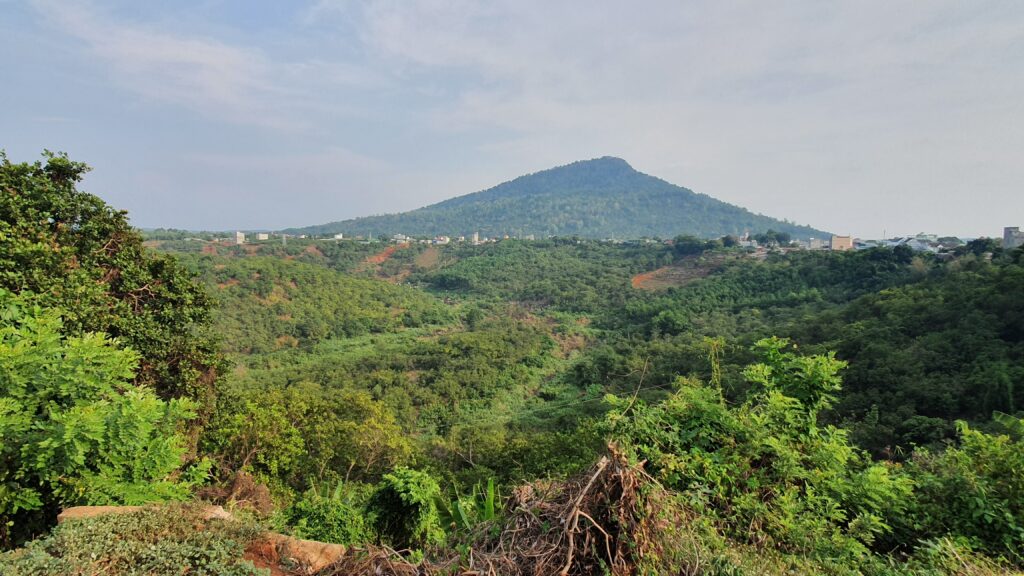
The airstrip did not serve supply planes, fighter jets or gunships, rather its main purpose was to serve as a runway for the U.S. Air Force Forward Air with call signs like Viper and later Rod. These FACs patrolled the province and supported Special Forces and the ARVN in the area.
The strip was also shared by the Red Marker FACs assigned to support the Vietnamese Airborne Division wherever it deployed. From 1969 through early 1970s, a task force of the Vietnamese Airborne conducted offensive sweeps around Song Be with support from the Red Markers.
The Red Marker pilot and their support staff lived at nearby FSB Buttons, which was a major base with a long runway and a large troop presence.. Each morning the pilots took off from the main runway at Buttons on their first mission of the day as the crew chiefs and mechanics traveled up the road to Song Be.
The Song Be strip was unique too because the town’s provincial headquarters, with its clock tower, was located at the north end, blocking takeoff and landing in that direction. The FACs always took off south toward the Nui Ba Ra mountain and landed to the north away from the mountain regardless of winds, challenging the pilots’ skills on a daily basis.
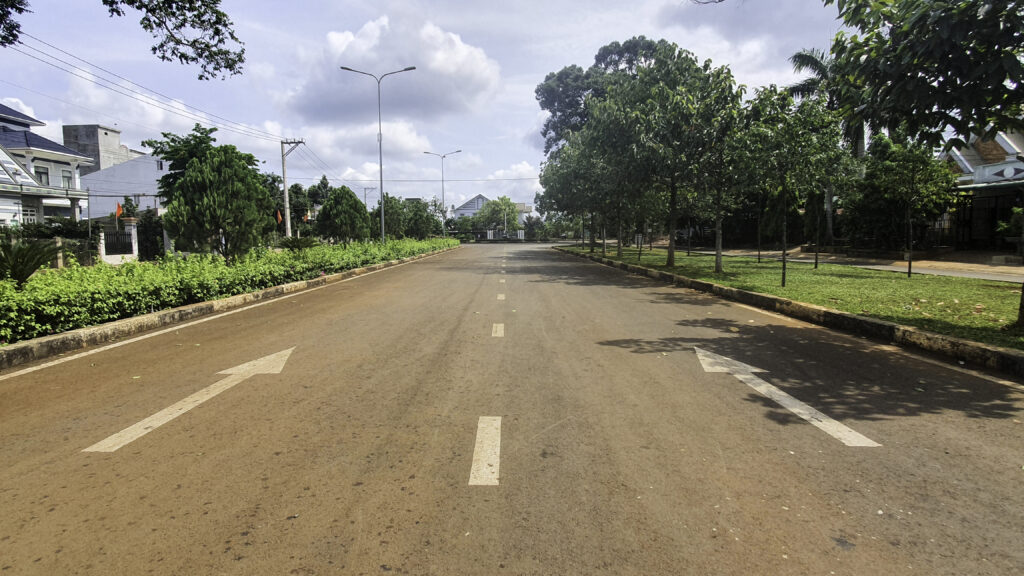
Over the last few months, the team behind namwartravel.com has had the honor to work together with some of the American veterans that served in and around the Song Be City airstrip. As they provided picture material from their time there and at FSB Buttons, we had the idea to help get their stories told by putting together a video. Our friend and colleague Luke Johnston at Vietnam Heritage – Healing Through History happened to be on site in Phuoc Long, he took time from his schedule to shoot video and take pictures of the area for the project. The veterans, Gary Willis, James Hoppe, Jim Yeonopoulus and Barry Schupp recorded their stories and all this resulted in the video below. We hope you will enjoy this unique insight in to the daily lives of the men who were there.
For the history traveler, the wider area is full of interesting war sites. North and east of Song Be there were a large number of Special Forces camps from the war, including Bu Gia Map, Bu Prang and Bu Dop. Several of these camps still have almost intact runways and often old perimeter berms or chopper pads that are easy to locate. To the west and south were a number of larger bases such as Phuoc Vinh, Quan Loi and Lai Khe as well as Special Forces camps such as Bu Nard and Loc Ninh.
Today the area is a sleepy backwater of the country, although not very far from Saigon and is secluded and quiet. But with the Cambodian border less than 30 kilometers away, it was very active during the war and right in the middle of the PAVN infiltration routes toward Saigon.
It’s not hard finding the runway in Song Be, it’s gone back to being the main street, now named Cach Mang Thang Tam. This name is common in Vietnamese cities as it refers to the August revolution, or the general uprising against the French and Japanese, which ended with Ho Chi Minh declaring Vietnamese independence on the 2nd of September 1945.
Riding down the runway, looking at Nui Ba Ra in the distance, it is possible to picture the FAC pilots taking off on another dangerous mission. The flagpole at the northern end is still there but the old provincial headquarter building that long bedeviled the FAC pilots, is long gone — possibly destroyed in the 1975 battle for the town.
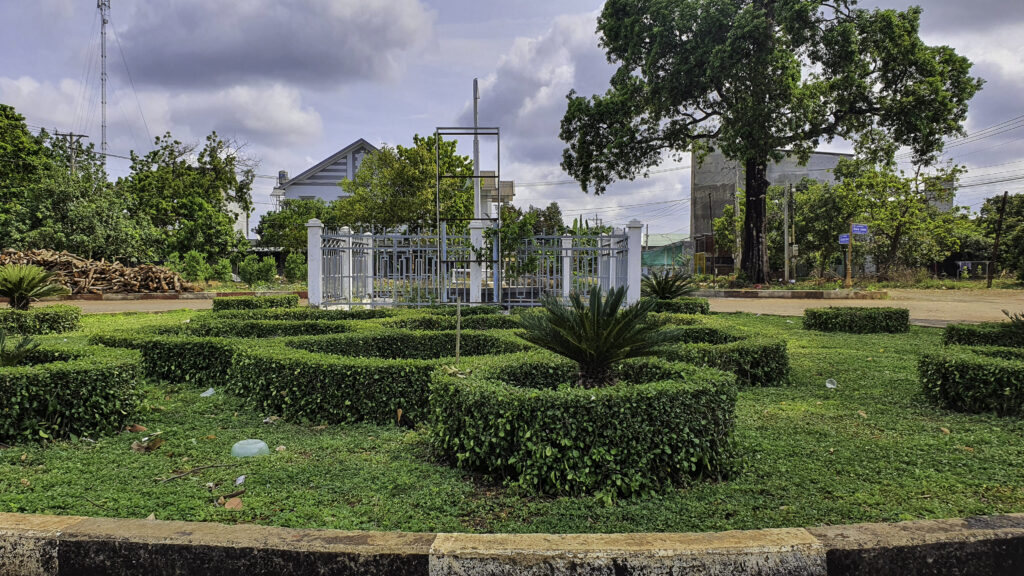
At the southern end of the runway there is a provincial museum. In the courtyard there are several old military aircraft and ground vehicles, while inside weapons and photos from the war are on display. The museum is there to commemorate the Battle of Phuoc Long which started on the 14th of December in 1974 and ended with a decisive PAVN victory on the 6th of January 1975.
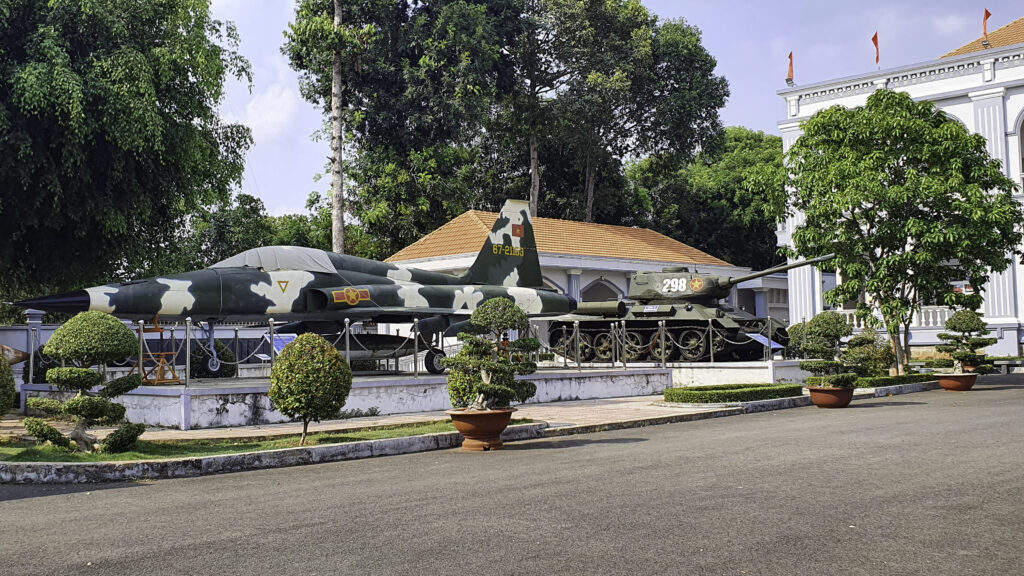
The attack on Phuoc Long was a test by Hanoi to see whether the American government would help the Saigon government militarily. They didn’t. This meant that the road to Saigon was finally open and they could keep advancing, ending the war in less than four months.
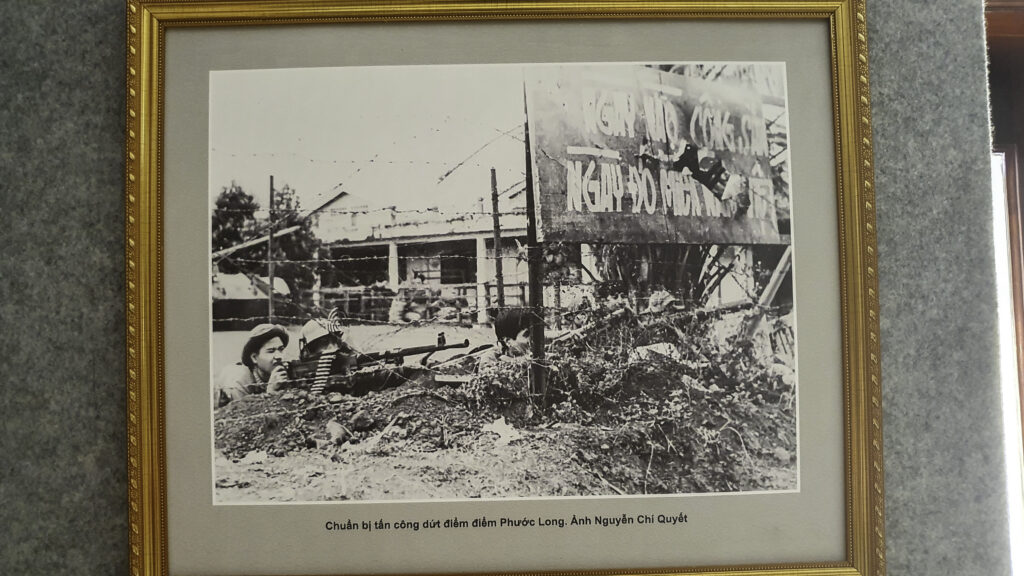
Beyond the runway and the museum, there is still much to see in the surroundings that would have been part of the daily life for the men posted there. Why not take a drive down the river valley and ride over one of the many Bailey Bridges that are still doing their job helping people cross the Song Be river? We found seven of these bridges near the town. From here you can also drive up to the top of the Ba Ra mountain and enjoy the view of the beautiful landscape.
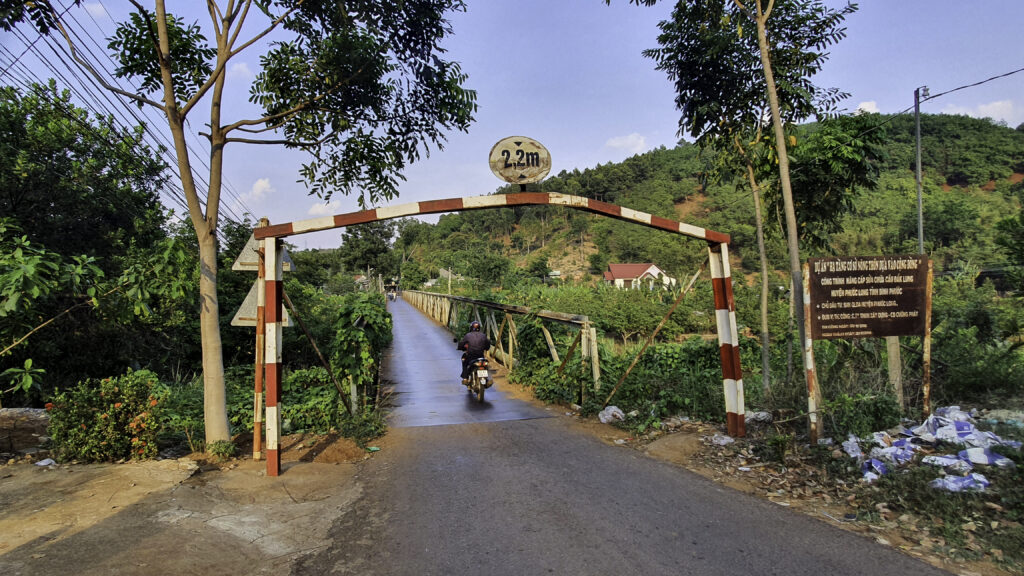
A special thank you to Gary Willis, Red Marker 18, Luke Johnston and Paul Schemm for the work with creating this article. Picture credits to Gary Willis and Luke Johnston.
JT
How to get there
Continue east on the main road from FSB Buttons about five kilometers and you will reach the site in town. From here one can also drive up the Nui Ba Ra mountain where there is a great view of the area where FSB Buttons was located.
We highly recommend staying a few nights up here to explore the area. There are reasonable hotels and guest houses in most smaller towns, people are friendly and the food is as always good. Binh Phuoc town where FSB Buttons was located is the better option as there are more hotels and restaurants here.
Decimal coordinates: 11.856150, 106.998925
Back to III Corps>>>
Hello, my name is Dave Ohlen. I was an engineer officer that through a strange set of circumstances ended up in the 378 Maintenance Support Company based in Long Binh in the last half of 1970. I had been in country about two days and was sent to Song Be where we had a maintenance support team living at the MACV compound in Song Be as an investigating officer to investigate a incedent between the leader of the team and a soldier at FSB Buttons. I caught a ride to Buttons in a cargo plane and stayed the night with our team in Song Be. They lived in a mostly underground bunker. When I finished my job I asked how do I get back to Long Binh? They said just wait by the Song Be runway and wait for someone going to Long Binh. I must have sat there for a couple of hours until a chopper landed and they said they were going somewhere close to Long Binh so I got a ride. When they landed at their destination it wasn’t Long Binh and I asked how do I get the rest of the way? They instructed me to just walk through the town outside their compound until I got to the main road and catch a ride with someone going to Long Bin which I did. Never did find out exactly where I landed but made it home ok. I regularly flew to Song Be and Quan Loi after that to visit our maintenance teams. I have some slides of Song Be from my times there and will try to find them and will send them when I do. One of my warrant officers knew someone in Air America scheduling and after my first eventful trip to Song Be I often flew on Air America into the runway at Song Be.
Hello Dave.
Thank you for your comment and visiting our website. I would love to see those pictures. If you find them, I would be very grateful if you would like to send them to us on [email protected]
Do you remember Gary Willis or James Hoppenwho are talking in the video?
Jonas, founder of namwartravel.com
I was in Song Be for the Tet attacks of early 1969. We were under multiple attacks on our position for a full week until 1st Air Cav came walking through and drove the NVN regulars away. My Colonel and Captain were killed and our Tactical Operation Center shared with the RVN regulars was destroyed.
Hello Arch
Thanks for you comment. I am happy you made it out. I hope you enjoyed the article and video.
/Jonas, founder or namwartravel.com
My name is Mel Schenck, Ensign, USNR, and I was a construction manager assigned to the U.S. Navy Officer in Charge of Construction from September 1971 to September 1972. I was given 21 construction contracts with Vietnamese constructors to manage, and one of the first of them was a new communications center building in Song Be in what was then Phuoc Binh Province. Our customer agency was the ARVN represented by a U.S. Army Corps of Engineers officer. I only went to Song Be once, in late 1971, to make the final inspection prior to turnover of the project to USAID. We flew to Song Be via a chartered Continental Airlines flight out of Tan Son Nhut airport using a two-engine Dornier aircraft that could take off and land in a very short distance. I remember flying into Song Be and realizing we were going to be landing on what was a city street. In the two hours that I was there, I never saw any other American personnel.
Thanks for your interesting comment Mel. All information about the place is welcome since so little comes up in other places.
/Jonas, founder of namwartravel
I’ve just found this site and the video really brought back some memories for me. From June 67 – June 68, I was with MACV Tm 70. From June 67 thru early November 67, I was the Asst. Advisor to the 3/9 Bn based at Phuoc Qua and Phuoc Loc, not far from Phuoc Binh District and Song Be. During that time I and our team (4) advised and accompanied our counterparts on a myriad of operations in and around Song Be and our own AOC. Our mission allowed us the opportunity to conduct operational liaison with the SF/B-34 staff in Song Be, and as well with the FAC pilots. On many occasions either myself or the Sr. Advisor would go up with one of the FAC.s to do a VR of areas that we planned to conduct operations in. Some of the FAC’s were on their second tour and previously had been there flying tactical fighting aircraft. I don’t recall any of their names, but I can truly say that they all were outstanding pilots and provided my team and our couterparts valuable support. In particular, the night of October 27, 1967, our compound at Phuoc Qua was attacked by a nearly full compliment of the 88th NVA Regt., which attempted three separate wave assaults to get into the compound. They
were not successful and suffered large losses of men and equipment. During this attack I operated two PRC-25 radios for coordination with the FAC pilots for air and artillery support. To this day, I cannot say enough praise for what the FAC pilots did as this attack continued through the night and into most of the next day.
Bill, thank you for your nice comment and for sharing some of your story. I am happy you liked this article and video. Stay safe. And if you’d like to add any more information or just talk about Song Be, you are welcome to email us on [email protected]
Jonas
Hello, my name is Tom Parker USAF. I was at Song Be during the sommer and fall of 70. I was the intel for the 22cd TASS FAC. I don’t remember the call sign when I first arived, but it was later changed to SUNDOG. We flew missions into Cambodia. Prior to this I was at Xuan Loc as Snoopy FAC. It seems hard to find anything about the SUNDOG FACs as we closed down in November of 70. Looking at th video brought back a lot of memories, like the mission school across the air strip from the compound and looking up the runway at the Province Capital.
Thank you for your comment Tom. I am happy you visited our website and that you liked the video. And thank you for the additional information. If you want, please send me an email on [email protected] and we can talk further. I would like to continue to learn more about the activities up there.
I was right there. Most of 1970. Ordered back to the states toward the end of November. I was a ground radio operater. I remember receiving a shoulder patch for sun dog but left before I ever had it sewn on. We should have known each other since we were both in the 22nd TASS. I was called joe since my name, Joachim, was a tough one to pronounce.
I arrived in VN in January 1966 and was first assigned to Hon Quan (An Loc). After about six weeks I was assigned to be the Air Liaison Officer and Forward Air Controller at Song Be where I worked for the remainder of 1966. In 1980 I wrote the book ‘Viper-7’, which I would provide a free copy to this project. I had one, other FAC assigned and two FAC’s were KIA during my tour. During my time at Song Be I received a Silver Star medal, two Distinguished Flying Cross medals and 21 Air Medals. Not a single American soldier was killed during my tour. I have lost contact with all of my AF men at Song Be except Capt. Joe Hughes and A1C Charles Rich. At Song Be I was the ALO to USSF B-34 and awe had A-teams at Dong Xoai, Bu Dop and we put in the Duc Phong A-Camp. Bu Gia Map-A camp had been abandoned. All in my book, Viper-7.
Hello Charles. Thank you for your comment. Please send me an email on [email protected]
I would love to learn more and I definitely want to read your book. I think there is more we can do to uncover the events that took place in this area.
Jonas
Viper 7,
I am glad that you saw this and commented to Jonas. Your book tells a great story. It was the inspiration for me to write the history of the Red Markers. Take care amd stay safe, Charlie!
Cheers
Gary Willis
Red Marker 18